Staking out a tent seems like it would be easy. In practice though, there is always an obstacle: a big rock exactly where your stake should go, loose ground, too-hard ground, snow or sand… But, if you know these tactics, you’ll be able to stake out a tent regardless of the conditions.
Tent Stake Angle
There is a lot of debate about the best angle for tent stakes. A lot of people argue that you should put the tent stake straight into the ground and not at an angle. The basis of this argument is this physics study. However, the study results don’t hold up in real-life scenarios. If the stake is vertical, the pull from the guylines will gradually cause the stake to angle towards the tent. When that happens, it can easily slide out of the ground. For that reason, I always stake my tent guylines at an angle.
Use these angles for Staking a Tent:
- 90 degree angle for tent guylines
- 15-20 degree angle for tent floors (stake goes directly into ground)
Also Read: How to Tie Out Tent Guylines
Hammering Tent Stakes (without Bending Them)
If the ground is soft and you have hard-soled footwear, then you can push the stake into the ground with your feet. However, if the ground is hard, you’ll need to hammer in the stakes.
To hammer stakes properly:
- Line up your stake at the appropriate angle.
- Gently tap the stake until it is at least 1/3 into the ground.
- Once stake is well into the ground, you can tap stake with more pressure.
Tips:
- Don’t try to get the guylines taut while hammering. Instead, use an adjustable sliding knot like the tautline hitch to tighten guylines after they stakes have been hammered.
- Use a rubber mallet instead of a hammer. This prevents stakes from bending.
- If your stakes keep bending, consider getting better ones.
Staking Tent in Windy Conditions, Loose Soil and Rocky Ground
The image below shows you how to stake a tent when the soil conditions aren’t great, or you need extra security because of heavy winds.
Method 1: Two stakes and 1 extra cord
Tie a loop at the end of the guyline. Pass an extra cord through the loop. Stake out each side of the extra cord.
This method reduces pressure on the stakes, so they are more secure in loose or rocky soil. It is also good for when there is a rock exactly where you need to stake.
Method 2: Three stakes and 1 extra cord
Stake out your tent normally. Then put an extra cord around this stake; stake out the ends of the extra cord. This helps anchor the first stake – great for loose soil.
Method 3: Three stakes and 2 extra cords
This method gives you two backups if your first stake should come out. Because each stake is tied together, the pressure is reduced across.
Method 4: Two stakes and 1 large rock
Stake out the guyline in two places. Put a large rock between the stakes.
Method 5: One stake, 1 extra cord, 1 small rock and 1 large rock
Stake down your tent. Tie an extra cord to the stake, then tie the other end of the cord around a rock or strong stick. Put a large rock on the extra cord so it sits between the stake and rock/stick.
Method 6: Not recommended
Don’t be tempted to criss-cross tent stakes. Instead of making them stronger, it will just loosen the soil.
Method 7: Not Recommended
Using two guylines from the same tie-out point is not recommended. It will help reduce strain on the tent stakes. However, it pulls on your tent fly and could cause it to tear.
Staking Tent in Sand or Snow
You can’t use normal tent staking methods when pitching on sand or snow. The stakes won’t hold, and you run the risk of losing them. Instead, use one of the methods shown here.
Method 1: Bury an Anchor
Use a clove hitch to attach your guylines to an anchor. The anchor can be your tent stake. If the sand or snow is very loose or there will be a lot of pull, then you need a longer and thicker anchor like a sturdy stick.
Dig a hole and put your anchor in the hole. The anchor should be perpendicular to the tent guyline!
Method 2: Pile of Rocks
This method works in sand, shallow snow and also on very hard ground. Use a clove hitch to attach the tent guyline to an anchor (your tent stake or a long, sturdy stick). Put a pile of rocks in front of the stick so it holds the guylines out.
Method 3: Parachute Anchors
To use parachute anchors, just fill them with sand or snow. Then attach them to your tent guylines and pull into position.
If you don’t want to buy parachute anchors, you can improvise them out of a stuff sack. Whatever you use will end up sandy or snowy though.
What to Do If Your Tent Stakes Break?
If your tent stakes break, become too bent, or you forget them at home, then you can:
- Improvise tent stakes. You’ll need a knife to carve stakes out of sticks. This generally doesn’t work well in bad soil conditions.
- Use rock anchors: Instead of using stakes, tie your guylines to large, heavy rocks. The downside is that this method requires a lot more cordage. Also, BE CAREFUL ABOUT SNAKES when lifting heavy rocks!
- Use the “pile of rocks” method: You won’t need as much extra cordage with this method as tying around a big rock. You also don’t risk dropping a massive rock on your feet.
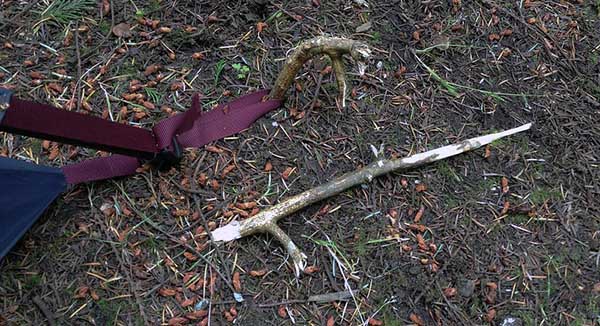
Want this information in PRINTABLE format?
Then you need my Camping Cheat Sheets.
The manual has 42 pages crammed with illustrated guides about everything from campfire cooking to wilderness first aid.
And because you made it to the end of this post, I’ll even give you 50% off 😀
Get Your Copy for 50% Off Here
Image credit: “Luxury sleeping arrangements – Carbon Cr” (CC BY-NC 2.0) by Al_HikesAZ, “DIY tent stakes” (CC BY-NC-SA 2.0) by xerhino


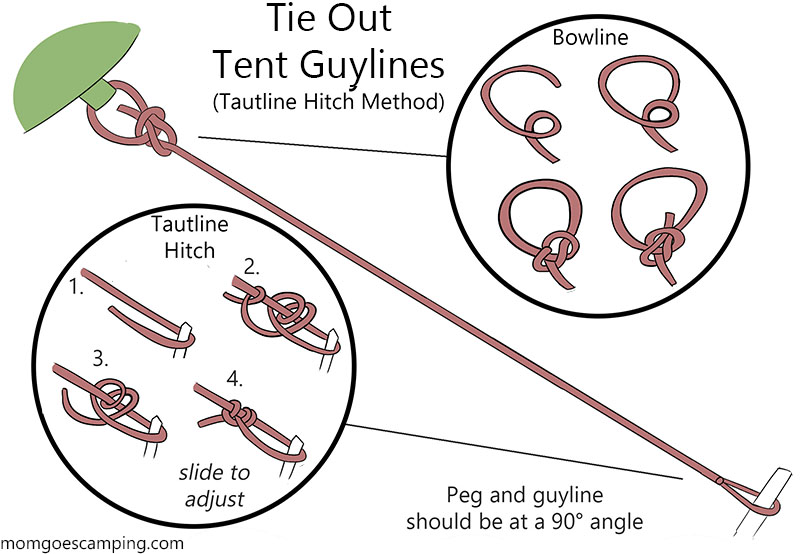
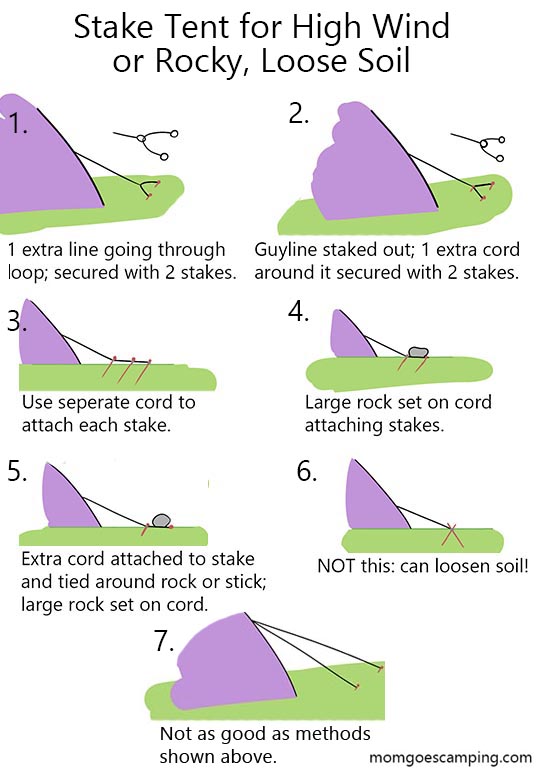
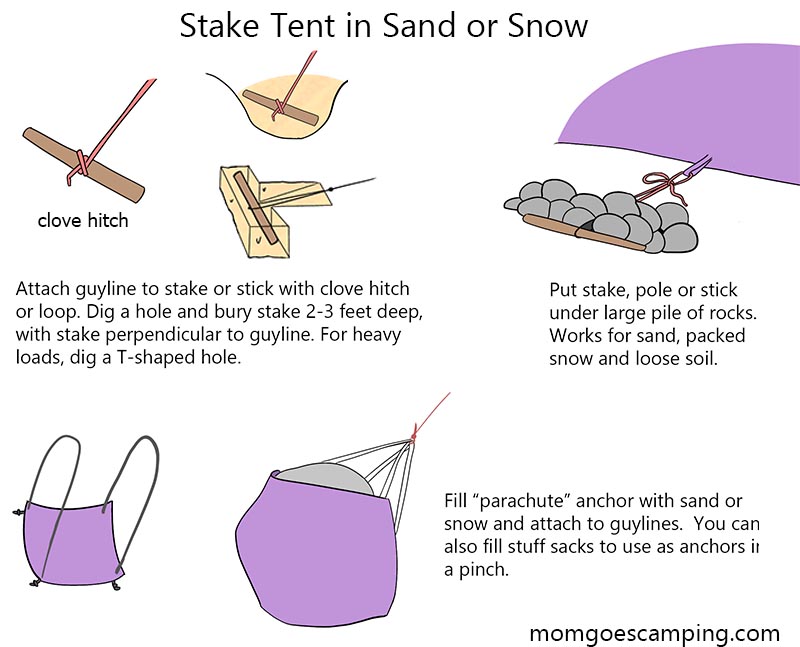
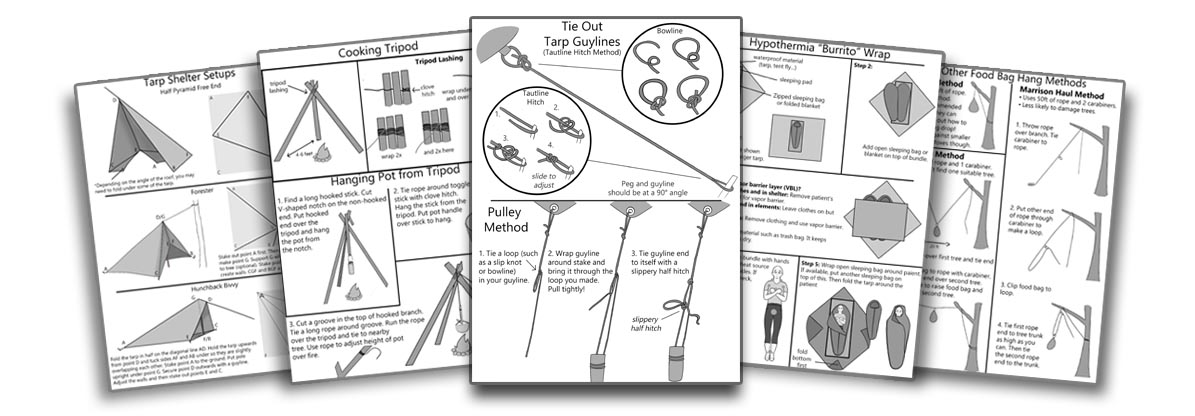

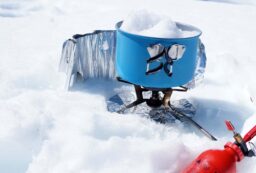








Post your comments